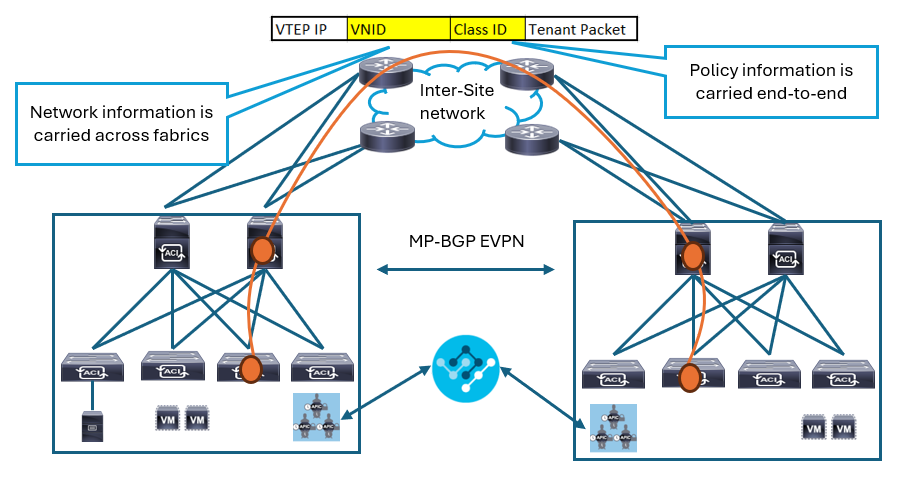EMAIL SUPPORT
dclessons@dclessons.comLOCATION
USMultiSite Overview:
Using Cisco ACI MultiSite architectures, organizations can deploy applications across data center fabrics, representing separate availability zones. The Cisco MultiSite is achieved by using the following functional components:
- Cisco Nexus Dashboard Orchestrator (NDO): This component is the intersite policy manager. It is an orchestrator that is positioned on the top of the Cisco APICs in different sites, providing a single-pane management. You deploy the Cisco Nexus Dashboard Orchestrator as an application in Cisco Nexus Dashboard.
- Intersite control plane: Endpoint reachability information is exchanged between sites using a Multiprotocol Border Gateway Protocol (MP-BGP) Ethernet VPN (EVPN) connection.External routes information via L3Outs can be exchanged between sites starting from the APIC release 4.2(1). This feature is called intersite Layer 3 Outside (L3Out). Prior to the intersite L3Out, each site must have its own L3Out locally.
- Intersite data plane: All communication between endpoints connected to different sites is achieved by establishing site-to-site Virtual Extensible LAN (VXLAN) tunnels across a generic IP network that interconnects the sites.
The following figure provides an overview of the three functional components in Cisco ACI MultiSite deployments:
 In a Cisco ACI fabric, two values identify the network and policy information, which are locally significant to the fabric. The VXLAN ID (VNID) identifies the bridge domain for Layer 2 communication or the VRF instance of the endpoint sourcing Layer 3 traffic, while the class ID is associated with EPGs, as contract-related information that used during policy enforcement. Class ID is a property that is known in the Cisco ACI Management Information Tree (MIT) as the "pcTag."
In a Cisco ACI fabric, two values identify the network and policy information, which are locally significant to the fabric. The VXLAN ID (VNID) identifies the bridge domain for Layer 2 communication or the VRF instance of the endpoint sourcing Layer 3 traffic, while the class ID is associated with EPGs, as contract-related information that used during policy enforcement. Class ID is a property that is known in the Cisco ACI Management Information Tree (MIT) as the "pcTag."





LEAVE A COMMENT
Please login here to comment.